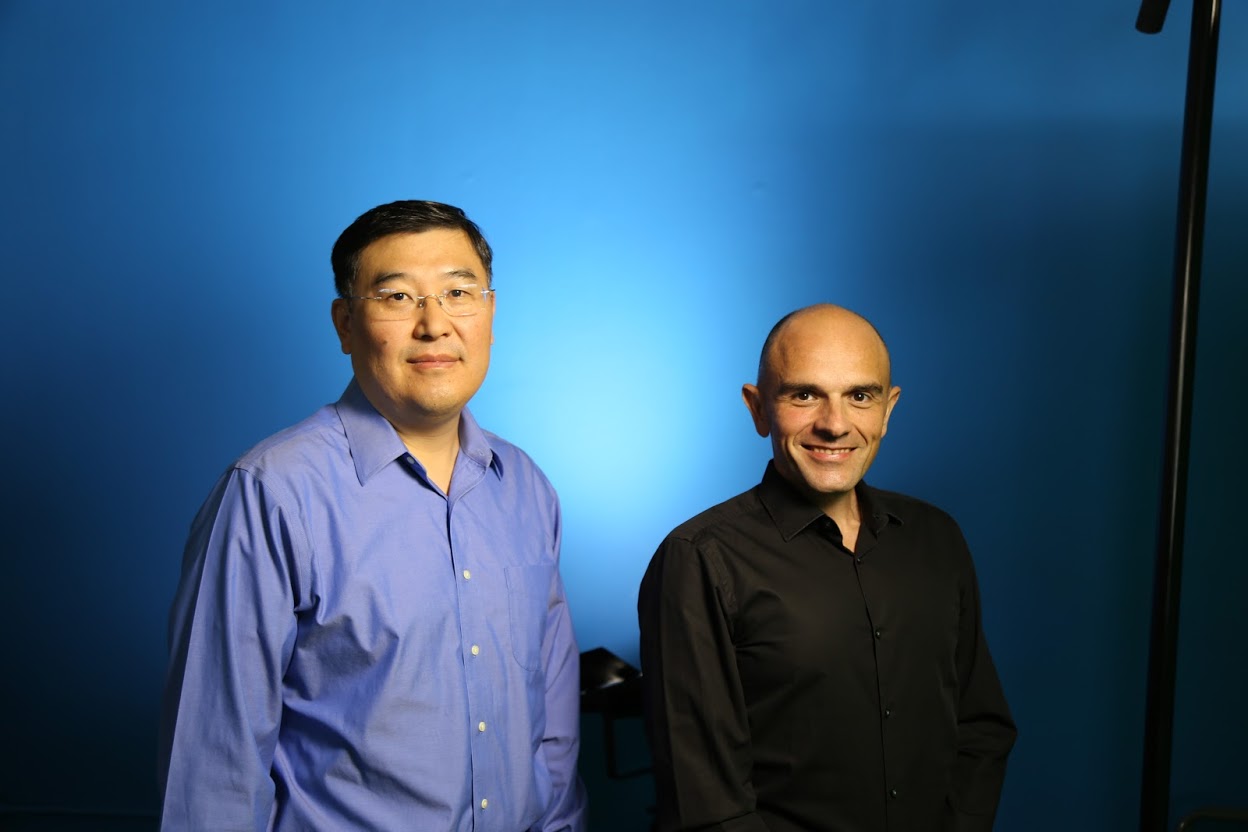 INFRA
INFRA
 INFRA
INFRA
 INFRA
INFRA
Multicloud — is it the logical evolution of infrastructure or a barely-feasible fantasy? In theory, when multiple clouds link and interoperate with each other, the resulting mesh is “multicloud.” How is this hybridized monster managed? A motley mix of vendors — from hyperconverged infrastructure company Nutanix Inc. to specialized software providers — have attempted an answer.
MarketsandMarkets Research Ltd. last year predicted the market for such solutions will more than triple by 2021. Existing products are typically found wanting, leading “single pane of glass” to be jokingly renamed “single glass of pain.”
The networking folks are throwing their hats in the ring too. There are compelling reasons why the network is powerful and pervasive enough to gel multiple clouds together, according to Hansang Bae (pictured, left), chief technology officer at Riverbed Technology Inc. Bae joined his colleague Frank Lyonnet (pictured, right), Riverbed’s deputy CTO, spoke with John Furrier (@furrier), host of theCUBE, SiliconANGLE Media’s mobile livestreaming studio, during an interview at theCUBE’s Palo Alto studio in California. (* Disclosure below.)
“With the right SD-WAN [Software-Defined Wide Area Network] philosophy, there is no difference between a branch, a laptop at a hotel, a data center, Azure or Google or Amazon,” Bae said. That is, there’s no difference from the view of information technology, he explained. That’s because those servers or other devices are just connectivity points along the SD-WAN speedway.
Can SD-WAN harbor a huge enterprise’s whole lot of apps running on several different clouds? To answer this question, Bae offers an anecdote: “I connected every instance of Amazon in the world as part of my routing infrastructure,” he said. “And by the way, I can do that with Azure as well.”
The SD-WAN is both visible and programmable, and its points are gathered on a virtual private cloud, Bae stated. Specifically, that is Virtual Private Cloud from Amazon Web Services Inc. Riverbed has integrated AWS VPC into its SteelConnect SD-WAN with cloud connectivity.
The VPC is the base from which multicloud is managed. In Riverbed’s hands, the VPC is effectively cloud agnostic. It can manage servers and applications from other clouds, Bae explained. “It’s not Amazon or Azure anymore — it’s your VPC. The fact that it runs on a different cloud system doesn’t matter, because we automatically connect those two together,” he said.
The VPC allows business and infrastructure personnel to stop worrying about which clouds run particular applications. “We’ll seamlessly connect it together,” Bae said. For example, take Microsoft Corp.’s Azure Active Directory, which secures access to cloud applications. This service could be presented to Amazon, Bae explained. “You can do that, because it’s your VPC. Do with it as you will,” he said.
It is not just meshing clouds, but managing them and their workloads — fast — which makes SD-WAN with cloud connectivity valuable, according to Lyonnet. The visibility built into SD-WAN can majorly boost a company’s agility. Errors can be caught and remedied immediately. “I have an intent; I want the network to behave like this. I need to verify immediately whether or not I’m going in the right direction,” he said.
Use cases for SD-WAN management are cropping up already. Retail customers have used SD-WAN to deploy network connectivity to pop-up stores with just an internet connection and a few clicks; and isolating traffic with easy, policy-based methods can be useful for capturing data from Internet of Things devices, Lyonnet explained.
SD-WAN is uprooting old networking dogmas and may trigger a comprehensive IT rethink at some businesses. “The network is the computer,” Bae said, quoting computing pioneer John Gage of Sun Microsystems Inc. “And with the SD-WAN and cloud movement, it really can be anywhere.”
To watch the complete video interview, visit the event page (registration required). (* Disclosure: Riverbed Technology Inc. sponsored this segment on SiliconANGLE Media’s theCUBE. Neither Riverbed Technology nor other sponsors have editorial control over content on theCUBE or SiliconANGLE.)
THANK YOU